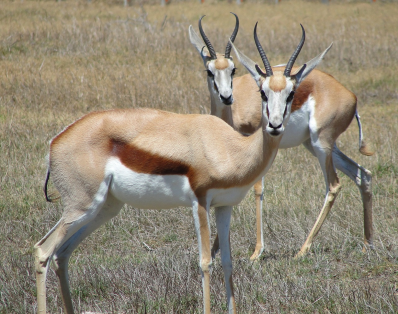Figurative language: springbok
The Grammar Bit!
Now that you are in Year 6, you will be familiar with figurative language. You may have used it in your stories and poems to build vivid images in the reader’s mind and to give greater meaning and strength to your words. In this lesson we will focus on three commonly used figurative devices:
- Simile – a simile directly compares two separate concepts by using connecting words such as ‘like’ or ‘as’. e.g. He was wily as a fox.
- Metaphor – a metaphor compares two things by saying something is something else. (It is like a simile but it doesn’t use the connecting words described above.) e.g. She cried a river of tears.
- Personification – personification is where you give a non-human thing human traits. e.g. Time marched on.
With your talk partner, decide which of the sentences opposite uses a simile, which uses a metaphor, and which uses personification. Give each sentence a score rating (1-10) based on the imagery that is created in your mind . How might you improve the imagery created by adding/changing any words or phrases?
Scintillating Sentences
1) As the springbok grazed, the butterflies flew like confetti through the air.
2) The ancient baobab trees stood tall, watching the springbok pronk around their gnarled and twisted bodies.
3) The young springbok was the prima ballerina, elegantly prancing around his vast ballet hall.

Did you know?
Although scientists don’t know for certain why springboks pronk, they think that they may do it for the following reasons:
- As a form of exercise
- To impress a potential mate
- To dissuade potential predators
- To show their enjoyment or excitement

